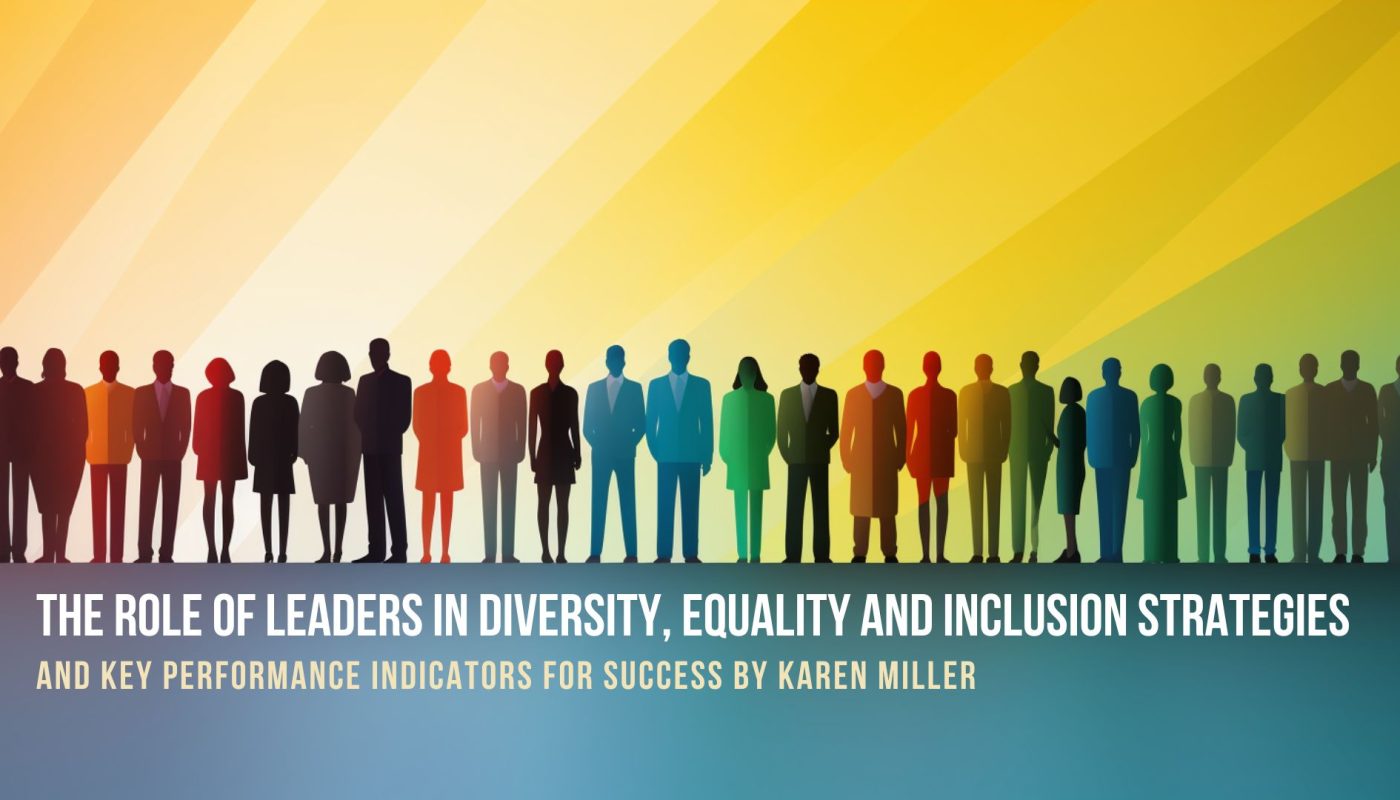Diversity, Equity, and Inclusion (DEI) in the workplace have gained significant attention in recent years. Companies recognize the importance of fostering diverse and inclusive environments to attract and retain top talent, enhance innovation, and achieve long-term success. In my recent conversation with Karen Miller, a DEI Consultant at DiVerse Consulting, we talked about the critical role that leaders play in implementing effective DEI strategies and Karen shared the key performance indicators (KPIs) that companies can use to measure the success of their initiatives. In this blog post, I share with the insights shared based on her experience working in the field.
Understanding DEI in the Workplace
To begin, let’s understand what Diversity, Equity, and Inclusion mean in the workplace. Karen Millen, an expert in the field, provides valuable insights. DEI encompasses a broad spectrum of initiatives, including restructuring systems, data analytics, talent development, and system development. It acknowledges that individuals bring unique skills, backgrounds, and experiences to the workplace. DEI strives to create an environment where every employee can thrive and contribute their best, ultimately leading to innovation and business success.
The Role of Leaders in Promoting DEI
Leadership plays a pivotal role in driving DEI initiatives within an organization. Karen emphasizes that leaders act as role models, influencing the entire workforce. When leaders prioritize and actively engage with DEI efforts, it sends a powerful message throughout the organization. They create a culture of inclusion and psychological safety, where employees feel comfortable speaking up, sharing their perspectives, and contributing to innovation.
Moreover, leaders have the authority and ability to allocate resources, making critical decisions that support DEI goals. Their commitment and accountability significantly impact employee engagement, retention rates, and overall business success.
Key Performance Indicators for Measuring DEI Effectiveness
Measuring the effectiveness of DEI strategies is essential to track progress and identify areas for improvement. Here are some key performance indicators that companies can track:
- Gender Split: Assess the gender diversity at different organizational levels, including leadership positions. Aim for a more balanced representation.
- Sickness Rate: Monitor the impact of DEI initiatives on employee well-being and mental health by tracking sickness rates.
- Retention Rate: Measure how successful your organization is at retaining diverse talent. A higher retention rate indicates a more inclusive and supportive workplace.
- Leadership Commitment: Evaluate leadership involvement in DEI initiatives. Leaders who actively participate and advocate for DEI tend to have higher employee engagement and satisfaction rates.
- Benchmarking: Compare your organization’s DEI progress with industry benchmarks and competitors. Identify best practices and areas where improvement is needed.
- Employee Surveys: Conduct regular surveys to gather employee feedback on DEI efforts. Use this data to make informed decisions and adapt your strategy.
- Cultural Intelligence (CQ): Develop and assess the cultural intelligence of employees to navigate cultural differences effectively in a globalized workforce.
- Return on Investment (ROI): Analyze the financial impact of DEI initiatives, such as increased sales, improved innovation, and reduced turnover costs.
- Inclusivity Metrics: Implement metrics to evaluate the inclusivity of meetings, decision-making processes, and company policies.
- Employee Resource Groups (ERGs): Monitor the growth and impact of ERGs, which can provide valuable insights and support for DEI initiatives.
Conclusion
Leaders play a crucial role in shaping the success of Diversity, Equity, and Inclusion strategies within organizations. Their commitment, accountability, and influence can drive meaningful change and foster inclusive cultures. To measure the effectiveness of these strategies, companies should track relevant KPIs, ensuring that their efforts lead to a more diverse, equitable, and inclusive workplace. Remember that DEI is an ongoing journey, and patience is essential as organizations work toward long-term cultural transformation.
And if you like to hear weekly insights on DEI, make sure to follow Karen on LinkedIn, where she talks about topics relevant to DEI. Follow Karen HERE.
Want to know what Diversity, Equity, and Inclusion (DEI) means in the workplace?
Check out my previous blog posts, where I talked to experts in the field to understand what DEI really mean and DEI in the recruiting process. Read them under the links below:
Diversity and Inclusion in the Recruiting Process: An Interview with Claudia Scherrer



